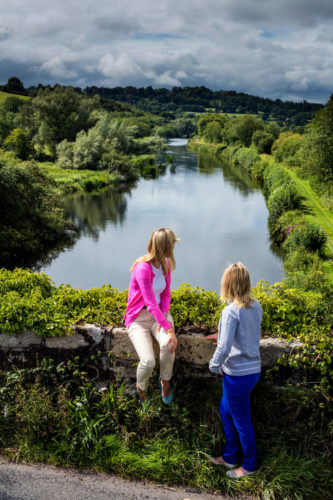
At their most recent meeting industry members of the Board of Carlow Tourism were strong in their praise and support for the Barrow Towpath Development Project being spearheaded by Waterways Ireland.

Industry members noted that the project is a once-in-a-lifetime opportunity to develop a high quality multi-activity leisure trail, with the ability to give the River Barrow and Barrow Way route, the profile and status it has long deserved but never fully received. Mr. Mark O’ Brien, Board Director and Manager of the Old Grain Store Cottages and the Mullicháin Café in St. Mullins stated “for many years and in many reports the River Barrow and the unique features of the towpath which runs alongside it, has been identified as a key tourism asset, but also as a completely under-utilised resource in this regard. The key to unlocking the tourism potential of County Carlow is in no small way rooted in the further development of the River Barrow and Barrow Way route. As has happened along the Great Western Greenway, this project will be an important influencing factor for visitors in their decision to travel to County Carlow”.
The Barrow Towpath project is entirely focused on sustainable rural regeneration and development through the provision of a recreational and tourism product of economic and social benefit to the local communities. Nationally tourism represents a key element of Ireland’s economic development policy with 263,000 people employed in the sector and in County Carlow tourism is seen as an important driver of revenue and job creation. Commenting Eileen O’ Rourke, Chief Executive Officer of Carlow Tourism stated “The Barrow Blueway project will inject much needed jobs and revenue into Carlow’s rural communities, sustaining them to keep local people in their local area. Research undertaken by Fáilte Ireland and Mayo County Council in respect of the Great Western Greenway in Mayo, whose length is much shorter than the Barrow Towpath, highlights its noticeable impact on business to the area, contributing €7.2 million annually to the local economy, creating 38 new full-time jobs and sustaining another 56 jobs.

Board members also noted the level of mis-information which is being circulated in respect of the project, urging members of Carlow Tourism and the public to appraise themselves of the actual and factual realities of the initiative. It is not the intention of Waterways Ireland to surface dress the route with tarmac. Neither is it their intention to create a three metre wide track or fence the track from the beauty of the Grand Canal or the River Barrow. The proposed development predominantly entails the use of clean stone and compacted quarry dust to a maximum of 2.5 metres, similar to that already in use along some stretches of the towpath in Graiguenamanagh, Goresbridge, Leighlinbridge and Bestfield and in keeping with the standards laid down by the National Trails Office and Transport Infrastructure Ireland (TII) for walking and cycling usage. Only the existing access roadway downstream from St. Mullins Lock, already prone to erosion, will be resurfaced with reinforced concrete. The unspoilt nature of the towpath will be maintained, but with better facilities for the visitor to enjoy. The proposed surface is suitable for leisure cyclists and will simply not be of interest to speed cyclists, another inaccuracy which has been widely reported.
Industry members on the Board of Carlow Tourism view the project as responding to a very strong market demand, both by domestic and overseas visitors. Almost 1.7 million overseas visitors in 2015 engaged in a walking activity while 2.1 million domestic trips in the same year involved a walking activity. James Kehoe, owner of the Lord Bagenal Hotel whose property fronts onto the River Barrow notes the increasing emphasis on activity based holidays. “Currently County Carlow is not benefiting from this trend, which would be facilitated by completion of the towpath development project. The planning upgrades proposed will increase the year round accessibility of the Barrow towpath to people of all ages and physical ability for a range of activities. Currently visitors are unable to use the towpath at certain periods of the year due to its poor state. It is also very difficult to gauge with reasonably accuracy the state of the towpath in other areas following periods of poor weather. The proposed surface will allow us to attract visitors to walk the Barrow towpath, in greater numbers, which will also give greater security to those walking the towpath as single users. I am in no doubt that a range of facilities will accompany the development of this project, which will foster new jobs for the local area.”

Industry members were strong in their praise for Waterways Ireland and their level of engagement and consultation with the public. They also noted that the proposal forms part of a larger strategy for the River Barrow, completed by Waterways Ireland in consultation with a number of key partners. Its goal to ensure higher visibility and recognition for the River Barrow, Ireland’s second longest river, as a very special area with strong heritage values. It recognises the potential of the river to become a busier waterway, as in years gone by when the river was a commercial hub, with benefits for both locals and visitors.